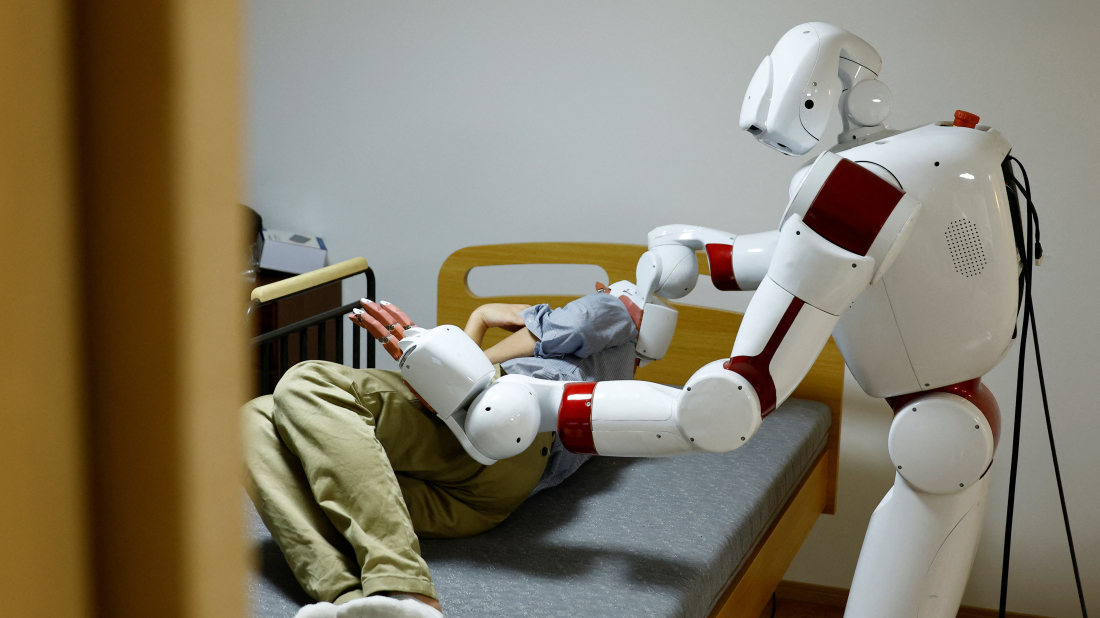Putin’s Ukraine aims unchanged
U.S. intelligence sources indicate that Russian President Vladimir Putin still intends to take control of all of Ukraine and reclaim parts of Europe t...
A robotic hand reaches out, adjusting a patient with careful precision. In a Tokyo lab, AIREC, an AI-driven humanoid, is being developed to assist Japan’s ageing population as the country faces a severe caregiver shortage.
Japan is ageing faster than almost any nation on Earth. The number of people aged 15-64—those who make up the workforce—is expected to shrink by 9.3% in the next decade, according to government data. Meanwhile, the elderly population continues to grow, straining the country’s already stretched caregiving system.
Unlike many Western nations, Japan has strict immigration controls, limiting foreign workers who could help bridge the gap. Instead, the government is betting on robots—not as a novelty, but as a necessity.
At Waseda University, researchers are developing AIREC, a humanoid robot designed to assist with daily care. From turning bedridden patients to helping them dress, the machine is built to perform delicate, hands-on tasks safely. It is part of a government-funded effort to revolutionise elder care with artificial intelligence.
Unlike traditional machines, AIREC isn’t just about automation—it’s about physical interaction. Most assistive robots work in controlled environments, but AIREC is being trained to sense human movements and react in real time.

“At the moment, robots still struggle to interact naturally with humans,” says Professor Shigeki Sugano, lead researcher at Waseda University. “The challenge isn’t just building a humanoid—it’s ensuring that the hardware and AI can work together to understand human behaviour.”
AIREC is already capable of helping patients sit up, put on socks, and perform simple household tasks like folding laundry and cooking scrambled eggs. Developers predict that by 2040, robots like AIREC will be assisting in care homes, with full-scale deployment expected by 2050.
Despite the rapid advancements, acceptance remains a challenge. In a Tokyo care home, 89-year-old Yukiko Namekata watches a robot perform a dance routine. Asked about the idea of robotic caregivers, she hesitates. "Isn’t it too early for that?"
Care workers also express mixed feelings. While robots could ease workloads, some fear the loss of human warmth—an essential part of caregiving.
Yet, as Japan’s caregiver shortage worsens, the presence of robots in hospitals and nursing homes may no longer be a choice, but a necessity.
AIREC is still in development, but its outstretched robotic hand symbolises more than just technology—it’s a glimpse into a future where caregiving is no longer just human.
Ukraine has welcomed the European Union’s decision to provide €90 billion in support over the next two years, calling it a vital lifeline even as the bloc failed to reach agreement on using frozen Russian assets to finance the aid.
European Union foreign policy chief Kaja Kallas has warned that attempts to reach a peace agreement in Ukraine are being undermined by Russia’s continued refusal to engage meaningfully in negotiations.
A rare pair of bright-green Nike “Grinch” sneakers worn and signed by the late NBA legend Kobe Bryant have gone on public display in Beverly Hills, ahead of an auction that could set a new record for sports memorabilia.
Chinese Foreign Minister Wang Yi has held a phone conversation with his Venezuelan counterpart Yvan Gil at the latter’s request.
Petroleum products are being transported by rail from Azerbaijan to Armenia for the first time in decades. The move is hailed as a tangible breakthrough in efforts to normalise relations between the long-time rivals.
China’s core artificial intelligence (AI) industry is projected to surpass 1.2 trillion yuan in 2025 (about $170 billion), up from more than 900 billion yuan in 2024, according to a new industry assessment.
Time Magazine has chosen the creators behind artificial intelligence as its 2025 Person of the Year, highlighting the technology’s sweeping impact on global business, politics and daily life.
Children are forming new patterns of trust and attachment with artificial intelligence (AI) companions, entering a world where digital partners shape their play, their confidence and the conversations they no longer share with adults.
The International Robot Exhibition (IREX) opened in Tokyo on 3 December, bringing together visitors to explore robotics applications for industry, healthcare, logistics, and everyday life.
A bipartisan group of U.S. senators, including prominent Republican China hawk Tom Cotton, introduced the SAFE CHIPS Act on Thursday, aiming to prevent the Trump administration from easing restrictions on China’s access to advanced artificial intelligence (AI) chips for a period of 2.5 years.
You can download the AnewZ application from Play Store and the App Store.

What is your opinion on this topic?
Leave the first comment